
by James Dean | Feb 15, 2024 | Blogs
How To Create a Great Twitter (X) Header
Here are some tips to create a great Twitter header:
1. Choose the right dimensions: The optimal size for a Twitter header is 1500 x 500 pixels. Make sure your design fits these dimensions to avoid distortion or cropping.
2. Reflect on your brand: Your Twitter header should align with your brand’s look and feel. Use your brand colors, fonts, and imagery to create a consistent visual identity.
3. Showcase your best work: If you’re an artist, photographer, or designer, consider featuring your best pieces in the header. This helps potential followers or clients get a sense of your style and talent.
4. Keep it simple: Avoid cluttering the header with too much text or excessive details. A clean and simple design is more visually appealing and avoids overwhelming the viewer.
5. Use high-quality images: Opt for high-resolution images that are clear and visually striking. Blurry or pixelated images can give a negative impression of your brand.
6. Include your logo or tagline: Add your brand’s logo or tagline to increase recognition and reinforce brand identity. Make sure it’s placed prominently but doesn’t distract from the overall design.
7. Consider seasonal or timely updates: Updating your header to reflect holidays, events, or current promotions can show that you’re actively engaged with your audience and keep your profile fresh.
8. Test different designs: Experiment with different header designs to see what resonates best with your audience. You can use tools like Articon or Adobe Spark to create professional-looking headers without requiring advanced design skills.
9. Pay attention to mobile view: Many users access Twitter through their mobile devices. Ensure your header is still visually appealing and legible when viewed on smaller screens.
10. Be consistent across platforms: If you have a strong visual brand presence on other social media platforms, consider maintaining a consistent header design across them. This helps with brand recognition and creates a cohesive online presence.
Remember, a great Twitter header should capture attention, reflect your brand’s personality, and leave a positive impression on visitors to your profile.
How to Create an Eye-Catching Twitter Header in 2024
Ever stared at your Twitter header thinking, “This needs a glow-up”? You’re not alone! Your header is prime real estate on your profile – it’s the first thing people see when they land on your page. Let’s dive into creating a header that makes followers go “Wait, how did they do that?” 🔥
Why Your Twitter Header Matters (Like Really Matters)
Think of your header as your digital billboard on Twitter’s bustling highway. It’s not just decorative – it’s your brand’s first impression, your vibe check, and your chance to stand out from the endless scroll of content.
Size Matters: The Technical Stuff You Need to Know
- Recommended dimensions: 1500 x 500 pixels
- File size limit: Under 2MB
- Supported formats: PNG or JPG (PNG for the win if you want crisp graphics)
- Safe zone: Keep important elements away from the edges and profile picture area
🔥 Pro Tips for a Scroll-Stopping Header
1. Keep It Clean and Clear
- Avoid cluttering your header with too much text
- Use negative space strategically
- Remember: simplicity > complexity
2. Brand It Like You Mean It
- Incorporate your brand colors
- Use consistent fonts with your overall branding
- Include your tagline or value proposition (but keep it snappy!)
3. Mobile-First Mindset
- Test your header on both desktop and mobile
- Ensure text is readable on smaller screens
- Account for how the profile picture overlaps on different devices
4. Stay Fresh and Relevant
- Update your header seasonally
- Align with current campaigns or launches
- Keep up with design trends (but don’t go overboard)
Design Tools That Won’t Break the Bank
- Canva (The OG choice for non-designers)
- Adobe Express (Formerly Spark – perfect for quick edits)
- Figma (For the design-savvy folks)
- Snapseed (Great for photo-based headers)
Common Mistakes to Dodge
❌ Using low-resolution images ❌ Overcrowding with text ❌ Forgetting about the profile picture overlap ❌ Ignoring mobile display ❌ Using hard-to-read fonts
Quick Header Ideas That Pop
- Showcase your work portfolio
- Feature customer testimonials
- Display your latest achievement
- Show behind-the-scenes content
- Create a mood board that represents your brand
The Secret Sauce: Test and Optimize
Don’t just set it and forget it! Monitor how your header performs:
- Ask for feedback from your followers
- A/B test different designs
- Track profile visit-to-follow conversion rates
Wrapping It Up
Your Twitter header is more than just a pretty picture – it’s a powerful tool in your social media arsenal. Take the time to create something that represents your brand and catches eyes. Remember, in the world of social media, first impressions happen in milliseconds!

by James Dean | Feb 13, 2024 | Blogs, Branding Design, Interior Designing, Logo Designing, Web Design, Web Development
Copyright Importance In Graphic Designing
Articon Design Agency is at the forefront of creativity, where imagination knows no bounds. As pioneers in the realm of graphic design, we understand the paramount importance of safeguarding creative brilliance through comprehensive copyright protection. In this article, we delve into the intricate world of copyright in graphic design, offering insights and guidance to ensure that your artistic masterpieces remain protected while your imagination continues to soar.

Understanding Copyright in Graphic Design:
- Automatic Protection:
- Just like a stroke of genius, copyright protection is granted automatically upon creating an original work fixed in a tangible medium. This fundamental principle applies to various forms of graphic design, including illustrations, logos, and digital artworks.
- Originality:
- Copyright in graphic design hinges on the concept of originality. It safeguards works of authorship that are the product of the creator’s creativity, prohibiting direct copies of others’ works. At Articon Design Agency, we celebrate each designer’s unique vision and innovative spirit, ensuring that every creation is a testament to artistic ingenuity.
- Rights Granted:
- Copyright grants designers exclusive rights to reproduce, display, and distribute their artwork. These rights serve as a protective barrier, empowering creators to control the usage and dissemination of their designs in the public domain.
- Fair Use:
- While copyright provides robust protection, it’s essential to navigate the nuances of fair use. This legal doctrine allows for the limited use of copyrighted material under specific circumstances, respecting the balance between creators’ rights and societal interests.
- Licenses:
- Through licensing agreements, graphic designers can selectively grant usage rights to others while retaining ownership of the copyright. These agreements offer flexibility and clarity, ensuring the creator’s vision is preserved while facilitating collaborative endeavors.
Why Copyright Matters for Articon Design Agency:
- Protection of Creative Assets:
- Copyright serves as a bulwark against unauthorized use, replication, or modification of our designs. By securing copyright protection, we uphold the integrity of our creative assets and maintain control over their usage in diverse contexts.
- Preserving Brand Identity:
- Our designs are not merely artworks; they are embodiments of brand identity and vision. Copyright protection safeguards the essence of our client’s brands, ensuring that their visual identities remain distinctive and memorable in the marketplace.
- Fostering Innovation and Collaboration:
- Respect for copyright fosters a culture of innovation and collaboration within the design community. By honoring creators’ rights and acknowledging their creative contributions, we cultivate an environment where ideas flourish, and collaborations thrive.
Conclusion:
At Articon Design Agency, we champion the principles of creativity, originality, and integrity. Through robust copyright protection, we uphold the rights of creators, preserve brand identity, and foster a culture of innovation. As stewards of artistic excellence, we invite fellow designers and enthusiasts to join us in celebrating the transformative power of graphic design, where every stroke of genius is cherished, and every creative endeavor is celebrated. Together, let us continue to push the boundaries of imagination and create a world where creativity knows no bounds.

by James Dean | Feb 4, 2024 | Blogs, Branding Design, Web Design, Web Development

by James Dean | Jan 21, 2024 | Blogs, Branding Design, Logo Designing
The Valiant Creek Logo Design Odyssey with Articon
The Valiant Creek Logo Design Odyssey with Articon
Custom Logo Design Sample And study: In the realm of digital canvases and creative endeavors, every business seeks a symbol that encapsulates its spirit and ethos. Join us on a fascinating journey into the creation of the emblem for ‘Valiant Creek,’ a venture that epitomizes resilience and strength.
The Virtual Encounter:
As the virtual doors of our creative studio swung open, a prospective client, let’s refer to them as the ‘Customer,’ stumbled upon our portfolio. Intrigued by the promise of visual storytelling, they embarked on a journey that would redefine the visual identity of Valiant Creek.
Enter Articon:
Enter Articon, the virtual architect behind the artistic wonders. The Customer, driven by a desire for a distinctive logo, found themselves in a realm of possibilities. The first point of connection was the array of logo design samples that spoke volumes about Articon’s craftsmanship.
The Initial Dialogue:
The dialogue commenced as the Customer expressed the essence of Valiant Creek – a business synonymous with courage, resilience, and forward momentum. Articon, armed with creative tools and a passion for translating ideas into visual wonders, listened intently.
Adobe Illustrator: The Artistic Weapon of Choice:
The conversation seamlessly transitioned into the choice of tools. Articon explained the rationale behind using Adobe Illustrator – a digital powerhouse that breathes life into creative visions. The precision, versatility, and scalability offered by Illustrator became the linchpin in bringing Valiant Creek’s identity to life.
Articon’s mastery over Adobe Illustrator meant that every stroke, curve, and color choice was a deliberate move towards creating a logo that transcended mere aesthetics. It was about crafting an emblem that echoed the very essence of Valiant Creek – strong, dynamic, and enduring.
Crafting the Samples:
With Valiant Creek’s story as a guiding beacon, Articon set out to create a series of logo samples. Each stroke, curve, and color palette was carefully chosen to resonate with the brand’s narrative. The samples weren’t just designs; they were visual stories waiting to be told.



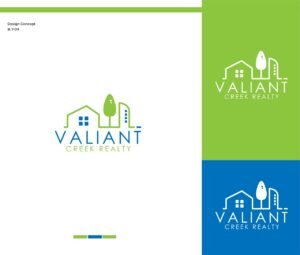
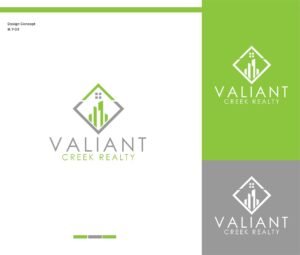
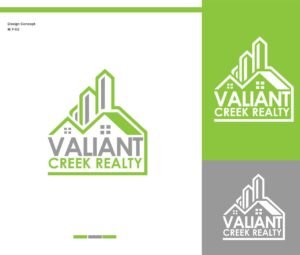


The Journey Unfolds:
The moment of revelation arrived as the logo samples were unveiled to the Customer. It was more than a presentation; it was an invitation to witness the birth of Valiant Creek’s visual identity. The Customer’s eyes sparkled with excitement as they saw their vision manifesting on the digital canvas.
The subsequent collaboration became a journey of refinement and evolution. The Customer provided insights, preferences, and nuances that transformed the samples into a bespoke masterpiece. It was a collaborative dance between client and creator, a harmonious synergy of vision and execution.
From Samples to Comprehensive Identity:
Enthralled by the possibilities and the seamless collaboration, the Customer decided to leap a Comprehensive Logo Package – a holistic approach to brand building. Valued at $319.99, this package went beyond a mere logo, encompassing business cards, letterheads, and social media branding.
Valiant Creek was no longer just a name; it was a brand with a visual identity that echoed strength and resilience. The partnership between Articon and the Customer had evolved into a story of transformation and empowerment.
Conclusion:
As we conclude the saga of Valiant Creek’s logo design, we invite you to explore the power of visual storytelling. Let your business’s identity be more than just a symbol; let it be a narrative that resonates with your audience. Embark on your creative journey, and who knows, your story might be the next masterpiece we craft together.
At Articon, we believe in the fusion of creativity and technology, and Adobe Illustrator remains our trusted companion in weaving visual wonders. Join us, and let’s redefine your brand’s identity, one stroke at a time.

by James Dean | Jan 21, 2024 | Blogs, Branding Design, Logo Designing

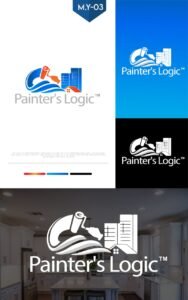

Painter’s Logic in Logo Design
In the world of creativity and expression, every business seeks a unique identity that resonates with its essence. This is where the journey of ‘Painter’s Logic’ began – a journey of turning visions into vivid brushstrokes of identity through captivating logos.
The Chance Encounter:
It all started with a simple click on our website by a curious soul, seeking something extraordinary. Little did we know that this visitor would turn into a valued client, forging a creative alliance that would redefine the visual representation of his business.
The Initial Conversation:
As the virtual door to our creative studio swung open for the visitors, they were greeted by an array of logo design samples, each telling a different story. The visitor, let’s call him ‘Artisan Alex,’ was drawn to the vibrant colors and unique designs that adorned our portfolio.
Intrigued, Artisan Alex reached out, initiating a conversation that would set the stage for an artistic collaboration. He expressed his passion for his business – a painting service that went beyond mere strokes on canvas; it was a celebration of colors, emotions, and skill.
Crafting the Initial Samples:
Eager to translate his enthusiasm into a visual masterpiece, we delved into the creative process. The customer shared his vision, his love for intricate details, and the essence of what made his painting service stand out. Armed with these insights, our team embarked on creating the first set of logo samples.
The samples weren’t just static designs; they were living, breathing reflections of Customers’ passion. From paintbrushes dancing elegantly to vibrant palettes converging in harmony, each logo told a story of creativity, skill, and dedication.
The Journey Unfolds:
As the digital canvases bearing the logo samples were unveiled to the Customer, a spark lit up his eyes. He was not just looking at designs; he was seeing his dreams take shape. The connection between the painter’s logic and the visual representation was palpable.
What followed was a journey of exploration and refinement. The customer provided valuable feedback, guiding us to refine the details until the logos resonated perfectly with his vision. It wasn’t just a transaction; it was a collaboration where ideas flowed seamlessly, merging the painter’s logic with the designer’s artistry.
From Samples to Comprehensive Identity:
Amidst the creative exchanges and iterative processes, the Customer found the perfect logo that encapsulated the spirit of his painting service. The journey didn’t end there; it evolved into a comprehensive partnership. Enamored by the potential of a complete brand identity, the Customer opted for our Comprehensive Logo Package, priced at $319.99.
This package wasn’t just about a logo; it was a holistic approach to brand building. It included a custom business card design, letterhead, and social media branding – a complete visual package that would ensure Painter’s Logic stood out in every facet of the business world.
Conclusion:
The story of Painter’s Logic is not just a tale of creating logos; it’s a narrative of collaboration, passion, and the seamless fusion of artistic minds. From a curious website visitor to a proud business owner with a comprehensive brand identity, Artisan Alex’s journey reflects the essence of what we do at our creative studio.
As we continue to weave stories through design, we invite you to embark on your creative journey. Let your business speak through visuals, and let the world see the logic behind your craft. Explore our logo design samples, and who knows, your story might be the next one we proudly tell.

by James Dean | Jan 17, 2024 | Blogs
How to use Twitter (X) for Business Marketing
Are you looking to harness the power of Twitter for your business marketing needs? Twitter is a dynamic social media platform with over 330 million active users, making it a valuable tool for businesses of all sizes. In this article, we will explore the strategies and tips to effectively use Twitter for business marketing, including building a strong online brand, generating leads, and increasing engagement. So, let’s dive in and discover how you can leverage Twitter’s potential to boost your online branding and lead generation efforts.
Twitter is a powerful social media platform that can be a valuable tool for businesses of all sizes. With over 330 million active users, it offers a vast audience for businesses to connect with and promote their products or services.
In this article, we will explore how to use Twitter for business marketing, including tips and strategies for building an online brand, generating leads, and increasing engagement.
Why Use Twitter for Business Marketing?
Twitter offers a unique opportunity for businesses to connect with their target audience in real time. With its fast-paced nature and character limit, it allows for quick and concise communication, making it an ideal platform for businesses to share updates, and promotions, and engage with their followers.
Building an Online Brand
Twitter can be a powerful tool for building an online brand. With its large user base and potential for viral content, businesses can quickly gain exposure and reach a wider audience.
To build a strong brand on Twitter, businesses should focus on creating a consistent and recognizable brand image. This includes using a profile picture and header image that reflects the brand’s identity, using a consistent color scheme and tone in tweets, and using hashtags and keywords related to the brand.
Businesses should also engage with their followers and respond to any mentions or messages promptly. This helps to build a positive reputation and establish a strong online presence.
Twitter can also be an effective tool for lead generation. By using targeted hashtags and keywords, businesses can reach potential customers who are interested in their products or services.
One way to generate leads on Twitter is by hosting a Twitter chat. This involves creating a hashtag and inviting followers to join in a conversation about a specific topic related to the business. This not only helps to generate leads but also increases engagement and brand awareness.
Another way to generate leads is by using Twitter ads. These ads allow businesses to target specific demographics and interests, making it easier to reach potential customers.
Now that we understand the benefits of using Twitter for business marketing/Ads on X, let’s explore some tips and strategies for making the most out of this platform.
Optimize Your Profile
The first step to using Twitter for business marketing is to optimize your profile. This includes using a profile picture and header image that reflects your brand, writing a concise and informative bio, and including a link to your website.
It’s also essential to use relevant keywords in your bio and profile name to make it easier for users to find your profile when searching for specific topics or businesses.
Use Hashtags and Keywords
Hashtags and keywords are essential for increasing the reach of your tweets and connecting with your target audience. Research popular hashtags and keywords related to your industry and use them in your tweets to increase visibility.
It’s also a good idea to create a branded hashtag for your business and encourage followers to use it when talking about your brand. This not only helps to increase brand awareness but also makes it easier for users to find your content.
Engage with Your Audience
Engagement is key to building a strong presence on Twitter. Make an effort to respond to mentions and messages promptly, and engage with your followers by retweeting and liking their content.
You can also use Twitter polls and surveys to gather feedback from your audience and show that you value their opinions. This not only helps to increase engagement but also provides valuable insights for your business.
Share Visual Content
Visual content is highly engaging on Twitter, with tweets containing images or videos receiving significantly more engagement than text-only tweets. Use high-quality images and videos in your tweets to catch the attention of your followers and make your content more shareable.
You can also use Twitter’s live video feature to connect with your audience in real time and provide behind-the-scenes looks at your business or product launches.
Twitter offers a free analytics tool that provides valuable insights into your account’s performance. Use this tool to track your follower growth, engagement rates, and top-performing tweets.
By analyzing this data, you can identify what type of content resonates with your audience and adjust your strategy accordingly.
Real-World Examples of Successful Twitter Marketing
Let’s take a look at some real-world examples of businesses using Twitter for successful marketing.
Wendy’s is known for its witty and humorous tweets, which have helped to establish the brand as a social media powerhouse. They often engage with their followers and even other brands, creating a fun and relatable online presence.
Their most successful tweet to date was a response to a user asking how many retweets they would need for a year of free chicken nuggets. Wendy’s responded with “18 million,” and the tweet went viral, receiving over 3.4 million retweets and helping to increase brand awareness.
Airbnb uses Twitter to showcase unique and beautiful properties available for rent on its platform. They also use hashtags and keywords related to travel and vacation to reach potential customers.
One of their most successful campaigns was the #LiveThere hashtag, which encouraged users to share their travel experiences and connect with the local culture. This campaign helped to increase brand awareness and engagement on Twitter.
Conclusion
Twitter can be a valuable tool for businesses looking to build an online brand, generate leads, and increase engagement. By optimizing your profile, using hashtags and keywords, engaging with your audience, and sharing visual content, you can make the most out of this platform and achieve your marketing goals.
Remember to track your performance using Twitter analytics and adjust your strategy accordingly to continue growing your presence on this powerful social media platform. With the right approach, Twitter can be a valuable asset for your business’s marketing efforts.
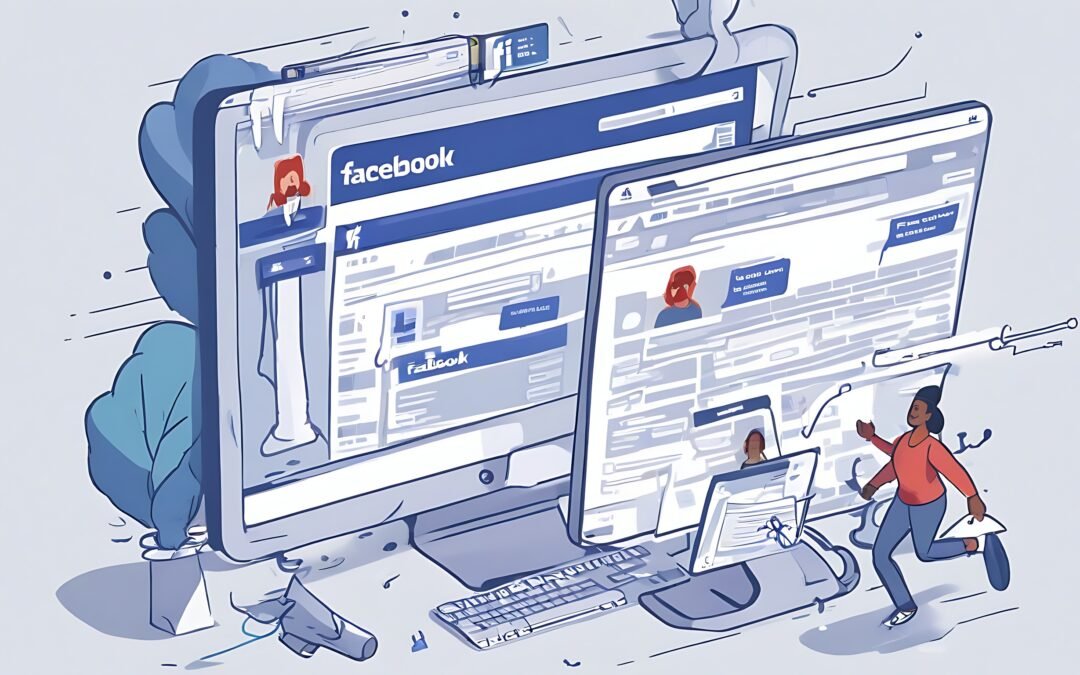
by James Dean | Jan 17, 2024 | Blogs, Branding Design, Digital Marketing
Mastering Facebook Advertising in 2024: The Ultimate Guide to Digital Marketing Success
Introduction
Facebook advertising continues to dominate the digital marketing landscape, reaching over 2.8 billion monthly active users globally. This guide offers a comprehensive look at how businesses can harness Facebook’s full advertising potential in 2024. From cutting-edge content tools to advanced targeting strategies, discover how to create powerful campaigns that drive results and maximize ROI.
The Evolution of Facebook Advertising
Key Advantages of Facebook Ads
- Unmatched Audience Reach
- Access to billions of active users across Facebook and Instagram
- Precision in targeting diverse demographics, including location, age, interests, and behaviors
- Global reach with tailored campaigns for any market
- Advanced Targeting Capabilities
- Behavioral targeting and custom audience creation
- Lookalike audiences to find new, relevant customers
- Interest-based segmentation for personalized ads
- Cost-Effective and Scalable Marketing
- Flexible budgeting options to suit any business size
- Performance-based pricing with cost-per-click or cost-per-impression models
- ROI tracking to measure the success of each campaign
Modern Facebook Ad Strategies
1. Content Integration Tools
Blog Post Integration
- Repurpose blog content into carousel ads to drive engagement
- Target blog readers with custom audiences based on their interest
- Use insights from blog content to inform your ad creative
PDF Tool Implementation
- Turn successful case studies or catalogs into downloadable PDFs for lead generation
- Use PDFs as a resource for retargeting campaigns to nurture prospects
Social Content Management
- Download high-performing competitor ads for inspiration
- Track trending formats to stay ahead of the curve
- Build a content library to streamline your creative process
2. Advanced Ad Formats
Video Ads
- Engage your audience with story ads, reels, and live stream promotions
- Utilize video carousel ads to showcase multiple products or services
Image-Based Ads
- Dynamic product catalogs and collection ads to drive e-commerce conversions
- Instant Experience ads for immersive full-screen mobile experiences
- Multi-image carousels to tell a visual story
3. Campaign Optimization Techniques
Audience Optimization
- Expand reach with custom audience layering and lookalike audience refinement
- Use interest-based targeting for deeper engagement
- Fine-tune audience parameters for better ad relevance
Budget Management
- Optimize campaign budgets with automated bidding
- Implement cost caps to control ad spend and maximize ROI
- Use return on ad spend (ROAS) metrics to evaluate success
Strategic Implementation Guide
1. Campaign Setup
Initial Setup Steps
- Install Facebook Pixel to track conversions
- Set up the Conversions API for deeper data insights
- Define campaign objectives and align them with business goals
- Create and refine custom audiences based on user behavior and engagement
Content Preparation
- Build a versatile ad creative library for varied campaigns
- Design visually appealing PDF resources for lead generation
- Create optimized landing pages to convert traffic into sales
- Develop follow-up content to maintain customer engagement
2. Best Practices for Ad Creation
Visual Elements
- Prioritize high-quality, engaging visuals and mobile-friendly designs
- Maintain brand consistency across all ads
- Use video and interactive content to grab attention
Copywriting Tips
- Craft compelling value propositions that resonate with your audience
- Include clear, actionable calls-to-action (CTAs)
- Focus on benefits, not just features, to drive conversions
- Integrate social proof to build trust and credibility
3. Performance Tracking
Key Metrics to Measure
- Click-through rates (CTR) to gauge ad engagement
- Conversion rates to assess how well ads drive desired actions
- Cost per acquisition (CPA) to monitor efficiency
- Return on ad spend (ROAS) for campaign profitability
Advanced Facebook Ad Techniques
1. Retargeting Strategies
- Re-engage website visitors and blog readers with tailored ads
- Follow up on PDF downloads with additional content or offers
- Use video engagement data to retarget users who watched but didn’t convert
2. Lead Generation Strategies
- Optimize lead forms for smoother user experiences
- Deliver valuable lead magnets like PDFs to boost conversion rates
- Set up automated follow-up sequences to nurture leads
3. E-commerce Integration
- Sync product catalogs to run dynamic ads
- Showcase personalized product recommendations through collection ads
- Enhance the shopping experience with Instant Experience and Shopping ads
Case Studies
Success Story 1: E-Commerce Growth
A fashion retailer integrated dynamic PDFs with Facebook dynamic ads, resulting in:
- 245% increase in Return on Ad Spend (ROAS)
- 67% reduction in cost per purchase
- 189% growth in conversion rate
Success Story 2: B2B Lead Generation
A software company combined blog content with Facebook lead ads:
- Generated 500+ qualified leads each month
- Reduced cost per lead by 40%
- Increased lead quality score by 85%
Future-Proofing Your Facebook Ad Strategy
Emerging Trends
- AI-powered ad optimization for smarter targeting
- Advanced automation tools to streamline campaign management
- Cross-platform integration with new social networks
- Enhanced privacy features and user data protection
Adaptation Strategies
- Continuously update your strategies to keep up with platform changes
- Regularly review new tools and integrations to stay competitive
- Monitor ad performance, run tests, and optimize campaigns frequently
Conclusion
Facebook advertising remains a powerful tool for businesses aiming to reach their target audience and drive measurable results. By adopting modern content tools, utilizing advanced targeting techniques, and staying adaptable in the evolving digital landscape, businesses can optimize their campaigns and achieve sustained success. Regular testing, creative innovation, and strategic planning are essential to staying ahead in the competitive world of social media advertising.

by James Dean | Jan 17, 2024 | Blogs
Outdated Marketing Tactics A Must Read
Step into the future of marketing, where the rules of engagement have morphed into a dynamic symphony of innovation. In the ethereal realm of 2024, the ever-evolving dance between consumers and marketers demands a fresh perspective, a daring leap into uncharted territories.
Remember the days when social media was a distant dream? Now, the landscape is teaming with voracious consumers craving instant gratification. Marketers, equipped with AI logo generators and avant-garde ad platforms, stand at the precipice of a fickle industry. To conquer this shifting terrain, let’s bid adieu to antiquated ideas and usher in a new era of captivating strategies.
Customer segmentation, once tethered to the mundane realms of demographics and geographics, now yearns for the ethereal touch of psychographics. Dive deep into the emotional tapestry of your audience – their values, desires, goals, and lifestyle choices. Elevate your Twitter marketing and email campaigns from generic to intimately personal, creating ripples across blog posts, social media, and beyond.
Customers, the discerning connoisseurs of the digital age, anticipate a symphony of personalized experiences. Harness the power of their data to not just meet but anticipate their desires. Delve into their past purchases, unravel their preferences, and orchestrate an exquisite dance of tailored offerings.
In the labyrinth of content marketing, bid farewell to the monotonous drone of promotional posts. Embrace diversity – infographics, polls, blogs, reports, and narratives – a harmonious medley that resonates with the diverse goals of your eclectic audience.
Video content, once relegated to the sidelines, emerges as the luminary star of 2024. From the whimsical reels of TikTok to the profound narratives on YouTube, let your brand’s story unfold through the immersive magic of moving images. It’s not just engagement; it’s an emotional odyssey that forges unbreakable connections.
Abandon the archaic notion of marketing as a one-way street. In this epoch, customer feedback is the heartbeat of success. Engage in a two-way conversation, respond to comments, and weave customer insights into the very fabric of your product development. It’s not just about selling; it’s about building a loyal community.
As the digital landscape evolves, the dichotomy of organic reach and paid advertising takes center stage. Strike a balance, let organic strategies intertwine with the strategic brilliance of targeted paid campaigns on platforms like Instagram and TikTok.
Mobile optimization, once a mere suggestion, metamorphoses into an imperative. Craft experiences tailored for the nimble fingers of mobile users. Responsive design, swift loading times, and mobile-friendly content become the currency of visibility in the digital realm.
You can Use Social Video Downloaders For Downloading Instagram Tiktok and Pinterest Videos for Your Project Use.
In the rapidly evolving digital landscape, several once-powerful marketing tactics have become relics of a bygone era. The practice of purchasing email lists, once considered a fast track to reaching potential customers, now often results in poor engagement rates and can damage your brand’s reputation. Similarly, keyword stuffing – the aggressive overuse of search terms to game search engine rankings – has become not just ineffective but potentially harmful to your SEO efforts. Traditional interrupt advertising, like pop-up ads and autoplay videos, frequently alienates modern consumers who value control over their browsing experience. The “spray and pray” approach of mass, untargeted advertising campaigns across multiple channels has given way to data-driven, personalized marketing strategies. Even the once-popular practice of focusing solely on desktop users has become shortsighted, as mobile devices now dominate internet traffic. Perhaps most notably, the strategy of maintaining a one-way conversation with customers through traditional advertising channels has become obsolete in an era where consumers expect authentic engagement and two-way dialogue with brands. These outdated tactics not only waste valuable marketing resources but can actively harm your brand’s credibility in today’s sophisticated digital marketplace.
In today’s digital marketing landscape, leveraging blog post platforms and PDF conversion tools has become an integral part of content distribution strategy. Popular blogging platforms like Medium, WordPress, and LinkedIn Articles serve as powerful content hubs, allowing marketers to reach engaged audiences while building domain authority through consistent, high-quality content publication. These platforms offer built-in SEO optimization features, social sharing capabilities, and analytics tools that help track content performance and audience engagement patterns. Similarly, PDF converter tools have emerged as essential marketing assets, transforming how businesses share and repurpose content. These versatile tools enable marketers to convert blog posts into downloadable guides, white papers, and e-books, creating valuable lead magnets for email list building. Leading platforms like Adobe Acrobat, Smallpdf, and PDF24 offer features beyond basic conversion, including document security, electronic signatures, and mobile optimization – critical functionalities for creating professional marketing materials. The symbiotic relationship between blogging platforms and PDF tools creates a robust content ecosystem: blogs drive organic traffic and establish thought leadership, while converted PDFs serve as gated content, generating leads and nurturing prospects through the marketing funnel. This digital duo empowers marketers to maximize content reach while maintaining professional presentation across multiple formats, ultimately leading to higher engagement rates and improved conversion metrics.
For marketers seeking to optimize their content strategy, popular blogging platforms offer distinct advantages:
WordPress: Ideal for complete website control and extensive customization
Medium: Perfect for reaching new audiences through its built-in distribution network
LinkedIn Articles: Excellent for B2B content and professional networking
Ghost: Optimal for subscription-based content models
Substack: Great for newsletter-first content strategies
Similarly, PDF conversion tools serve various marketing needs:
iLovePDF3: Batch processing capabilities for large-scale marketing campaigns
When these tools are strategically implemented in a marketing workflow, they create a seamless content creation and distribution system that maximizes both reach and conversion potential.
In conclusion, let’s embark on a journey of reinvention. Dust off the relics of outdated strategies and embrace the avant-garde. 2024 beckons – a year of audacious creativity, profound connections, and marketing maneuvers that redefine the game. Unleash the spirit of Articon and make this year a symphony of innovation that resonates across the vast expanse of the marketing cosmos. Here’s to a year of limitless possibilities!
Recent Comments